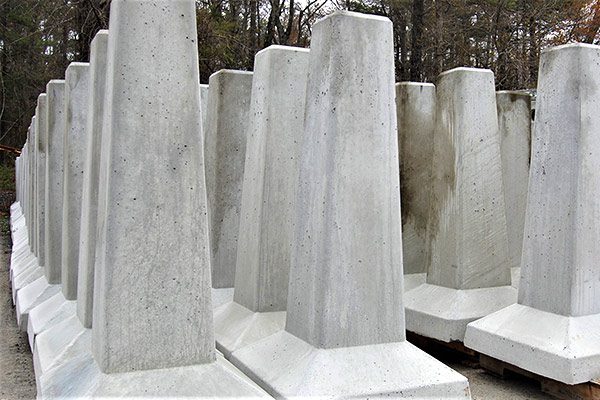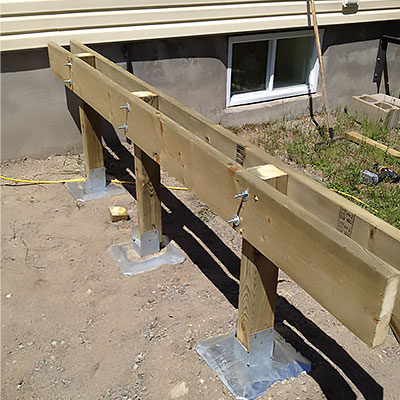Architectural Stability Issues: Picking the Right Deck Footings for Your Outdoor Task
Architectural Stability Issues: Picking the Right Deck Footings for Your Outdoor Task
Blog Article
Make Sure Security and Durability With Effectively Set Up Deck Grounds
Deck footings might not be the most attractive facet of deck building, yet they play a vital function in ensuring stability and durability. Properly set up grounds provide a solid structure for your deck, preventing typical concerns like sagging, shifting, and also collapse. Nonetheless, choosing the ideal kind of ground and correctly installing it can be an intricate process. In this conversation, we will certainly explore the value of correct deck grounds, elements to think about throughout installation, different sorts of grounds available, step-by-step installment overview, and maintenance pointers for guaranteeing resilient grounds. If you desire to guarantee the security and longevity of your deck, keep reviewing to uncover the essential understandings to attain a structurally sound and long lasting outdoor space.

Relevance of Proper Deck Footings
Why are correctly set up deck footings essential for the stability and durability of your deck? The solution lies in the basic role that deck grounds play in sustaining the weight of the whole framework. Deck grounds are the structure on which the deck relaxes, moving the load from the deck to the ground. When footings are not correctly set up, it can cause a variety of concerns that endanger the security and longevity of the deck.
First of all, correctly set up deck footings disperse the weight of the deck equally, protecting against any kind of irregular settling or sinking. This is specifically crucial in locations with unsteady soil, as it helps to mitigate the threat of the deck breaking down or shifting. In addition, well-installed grounds make sure that the deck stays level, protecting against any kind of structural damage that can take place when a deck ends up being uneven.
Secondly, effectively set up footings offer a strong support for the deck, avoiding excessive activity and persuade. This assists to maintain the architectural stability of the deck, decreasing the risk of injuries or crashes. It likewise minimizes the damage on the deck, enabling it to withstand the components and routine use for a longer amount of time.
Elements to Consider for Deck Ground Setup
When installing deck grounds, there are a number of important variables to think about for proper installment. These elements can greatly affect the security and longevity of your deck. You require to determine the kind of dirt on which the deck will be developed. Various soil types have various load-bearing capacities, so it is vital to conduct a soil examination to ensure the footings can sustain the weight of the deck and its owners. Additionally, the place and format of the deck should be thoroughly intended to avoid any type of challenges such as trees, energy lines, or underground pipes. It is additionally important to think about the regional climate and weather, as these can influence the sturdiness of the grounds. Regions with a high water table may require extra steps to prevent water damage. Lastly, the size and material of the footings should be chosen based on the size and weight of the deck, as well as the local building regulations and policies. By taking into consideration these aspects, you can make sure the appropriate setup of deck grounds and take pleasure in a steady and lasting deck.
Sorts Of Deck Grounds to Select From
There are several various types of deck grounds offered for you to pick from. Each kind has its own benefits and downsides, so it's important to consider your particular demands and the problems of your deck before deciding.
One common type of deck footing is the concrete footing. This entails excavating openings in the ground and putting concrete into them to develop a solid foundation. Concrete footings are resilient and offer outstanding stability, making them appropriate for decks in areas with challenging soil problems or high wind lots.
An additional alternative is the helical pier footing, which includes a steel shaft with helical plates that are screwed into the ground. These grounds are fast to set up and can be used in various soil kinds, including sandy or clay soils. They are additionally flexible, permitting simple leveling of the deck.
Sonotube footings are an additional preferred click resources option. These footings Read Full Article are developed by positioning a cardboard tube in an opening and filling it with concrete. Sonotube footings are relatively very easy to set up and offer adequate security for smaller decks or in locations with less requiring soil problems.

When choosing the type of deck ground, it's essential to think about aspects such as dirt problems, deck dimension and weight, neighborhood building ordinance, and individual choices. By choosing the proper footing type, you can guarantee the stability and longevity of your deck.
Step-by-Step Overview for Putting Up Deck Footings

Identify the area: Begin by marking the specific position of each footing making use of stakes and string (Deck Footings). Think about any kind of local building codes or guidelines concerning setback ranges
Dig the openings: Use an article opening digger or an auger to dig the holes for the link grounds. The deepness will depend upon the frost line in your location and the kind of soil. Typically, a depth of at the very least 36 inches is advised for stability.
Level the holes: Guarantee that the bottoms of the holes are level (Deck Footings). This can be accomplished by making use of a degree or a straight board across the top of the holes
Include gravel: Place a layer of gravel at the end of each hole to improve drainage and prevent the footing from penetrating the soil in time.
Insert the footing forms: Insert the ground creates right into the openings, guaranteeing they are focused and level. Use stakes to secure them in place.
Mix and put concrete: Adhere to the guidelines on the concrete mix bag to prepare the concrete. Put the concrete right into the footing forms, filling them completely.
Smooth the surface area: Make use of a trowel to smooth the surface area of the concrete and eliminate any type of air pockets. Allow the concrete to cure according to the manufacturer's instructions.
Upkeep Tips for Resilient Deck Grounds
Appropriate maintenance is important for guaranteeing the longevity and security of deck grounds. By on a regular basis checking and preserving your deck footings, you can prevent damages and prospective security hazards. One important facet of maintenance is to routinely check for any kind of indicators of degeneration, such as cracks or activity in the grounds. It is vital to address them without delay to prevent more damages. if you discover any kind of problems.
Regular cleaning is additionally important for keeping deck footings. Greenery, dust, and particles can accumulate around the footings, which can cause moisture build-up and decay. Cleaning up the grounds regularly, utilizing a stress or a brush washer, can assist protect against these issues and prolong the life expectancy of your deck.
In enhancement to cleansing, it is very important to keep the area around the grounds free from any kind of obstructions. Prevent piling things versus the grounds or allowing plants to grow also close to them. These obstructions can trap wetness and create the footings to weaken gradually.
Last but not least, regular resealing of the footings is suggested to secure them from wetness and various other ecological aspects. Using a water-proof sealer can aid protect against water damage and extend the lifespan of the footings.
Final Thought
In final thought, appropriate setup of deck footings is vital for making certain stability and longevity of your deck. Factors such as soil type, load capacity, and local building regulations require to be considered when picking the appropriate kind of deck footings. Following a step-by-step overview for setup and routine maintenance will certainly assist to make sure the footings remain durable and long lasting.
In this discussion, we will certainly discover the significance of proper deck grounds, aspects to think about throughout installment, various types of grounds offered, step-by-step installment guide, and upkeep ideas for guaranteeing long-lasting grounds. Deck footings are the structure on which the deck rests, moving the tons from the deck to the ground.One common kind of deck footing is the concrete ground. Insert the footing forms: Place the footing creates into the openings, ensuring they are focused and level.In final thought, proper setup of deck footings is critical for making certain stability and long life of your deck.
Report this page